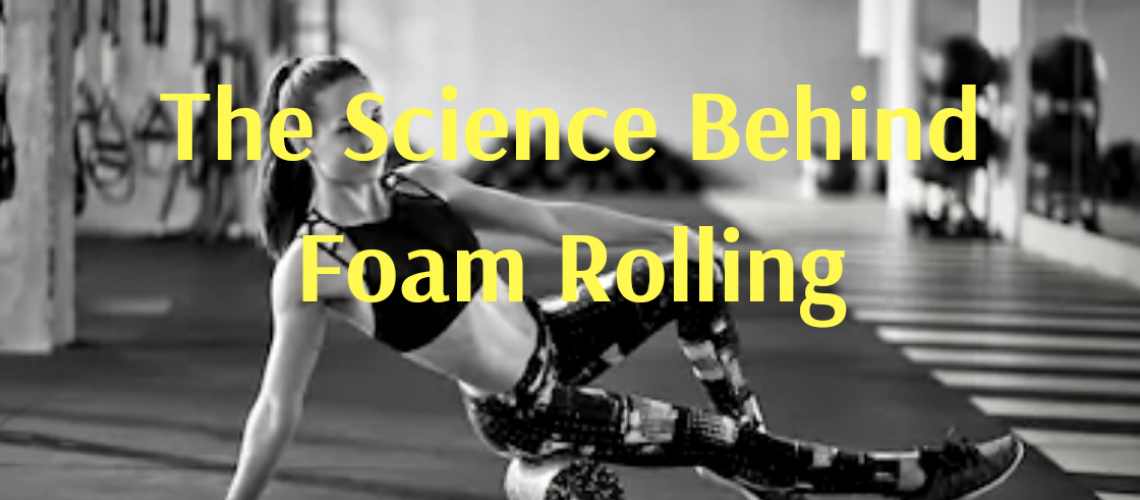Foam Rolling – Why? For How Long? Where? What does it do?
In recent years, foam rolling has become a mainstay practice in all kinds of sport and athletic settings – and has been regarded within the strength and conditioning field, as a means to improve the efficiency of training, competition preparation or post-exercise recovery. Despite the popularity of foam rolling, no consensus exists on its benefits, when the best time of us is, and it’s mechanism. It’s mechanisms can be attributed to mechanical, neurological, physiological and psychophysiological. Here’s a breakdown of the science:
Warning: the next bit gets quite “science-y”. If you’d like a summary, scroll down to the chart and discussion sections
CONNECTIVE TISSUE PROPERTIES
- Foam rolling results in a temporary increase in ROM by elevating tissue temperature, and altering the viscoelastic properties of fascia; NOT MUSCLE
- The effects are short-lived with tissues returning to their original state within minutes of ceasing application
- Effects only on the fascia, not the muscle itself
NEUROMUSCULAR FUNCTION
- Mechanical force applies to tissue stimulates mechanoreceptors in the fascia, which affects the proprioceptive input back to the CNS – resulting in an altered tone of tissue within the fascia
- Mechanical pressure applied to fascia, sends a neural signal to the CNS, which sends back a neural signal to reduce tone in the affected muscles
ARTERIAL FUNCTION
- Foam rolling stimulates pressure receptors on the arterioles, which affect the autonomic nervous system, leading to a decrease in sympathetic tone; resulting in a decreased myofascial tone and improved arterial function
TISSUE HYDRATION
- When compressed, fascia extrudes water, which could explain why foam rolling can increase fascial compliance by temporarily changing water content levels in the fascia
DELAYED ONSET OF MUSCLE SORENESS
- Individuals who foam roll to enhance recovery and reduce DOMS do so by the aforementioned mechanisms – and have been shown to significantly improve (up to 48hrs) pain threshold, reduced DOMS and improve athletic performance (measured with the standing broad-jump, 30m sprint test and barbell back squats)
JOINT RANGE OF MOTION
- Significant change in hip extension ROM when foam-rolling the anterior thigh for 1-2 mins; However, hip extension values returned to baseline within 48hours
- Foam Rolling, when combined with dynamic stretching, produced significantly better range of motion than either alone (foam rolling alone, or dynamic stretching alone)
MUSCLE PERFORMANCE
- Improvement in neuromuscular efficiency (measured by EMG) of the quadriceps muscle during a lunge, after foam rolling
- Short-term increase in firing rate and recruitment patterning of the affected area during foam rolling
| Foam Rolling DOES NOT | Foam Rolling Does |
| Break up adhesions, scar tissue or “knots” in muscle | Temporarily reduce muscle tone largely due to neurologically-mediated mechanisms |
| Affect the physiological components of the muscle | Affect the fascial layers |
| Improve joint mobility LONG TERM | Roughly 10 min increase in PASSIVE (not active) joint mobility |
| Improve tissue elasticity (flexibility) LONG TERM | Roughly 48hrs of passive tissue extensibility |
| Work better if it hurts more | Works better when slow, controlled and manageable, to keep sympathetic tone downregulated |
| Replace adequate passive and active joint mobility exercises | Reduce symptoms of DOMS (post-exercise muscle soreness) |
| Short-term increase in neurological efficiency to the area foam-rolled |
DISCUSSION
In short, foam rolling is a good tool to use PRIOR to athletic activities, to maximize it’s benefits of SHORT-TERM increased neuromuscular efficiency and passive tissue elasticity. In dealing with recovery from exercise the day before (DOMS), it can be quite useful to increase pain tolerance and decrease muscle soreness up to 48-hours post-exercise.
However, claims that it can break down knots, or remove scar tissue; or can be done in isolation to maintain joint and tissue health, are not backed by any form of research across a variety of publications
SOURCES
Cole, G. (2018). The Evidence Behind Foam Rolling: A Review. Sport and olympic-paralympic studies journal: SOPSJ, 3(1), 194-206.
Wiewelhove, T., Döweling, A., Schneider, C., Hottenrott, L., Meyer, T., Kellmann, M., … & Ferrauti, A. (2019). A meta-analysis of the effects of foam rolling on performance and recovery. Frontiers in physiology, 10, 376.
Cheatham, S. W., Kolber, M. J., Cain, M., & Lee, M. (2015). The effects of self?myofascial release using a foam roll or roller massager on joint range of motion, muscle recovery, and performance: a systematic review. International journal of sports physical therapy, 10(6), 827.
Healey, K. C., Hatfield, D. L., Blanpied, P., Dorfman, L. R., & Riebe, D. (2014). The effects of myofascial release with foam rolling on performance. The Journal of Strength & Conditioning Research, 28(1), 61-68.
Pearcey, G. E., Bradbury-Squires, D. J., Kawamoto, J. E., Drinkwater, E. J., Behm, D. G., & Button, D. C. (2015). Foam rolling for delayed-onset muscle soreness and recovery of dynamic performance measures. Journal of athletic training, 50(1), 5-13.

